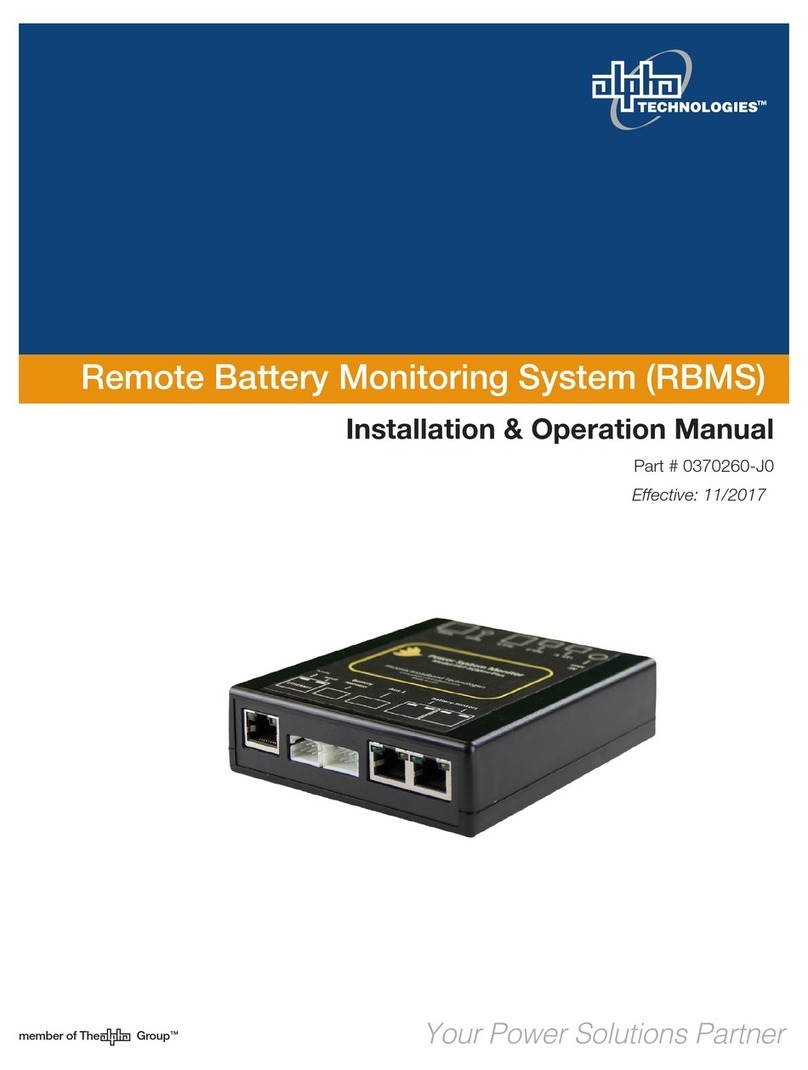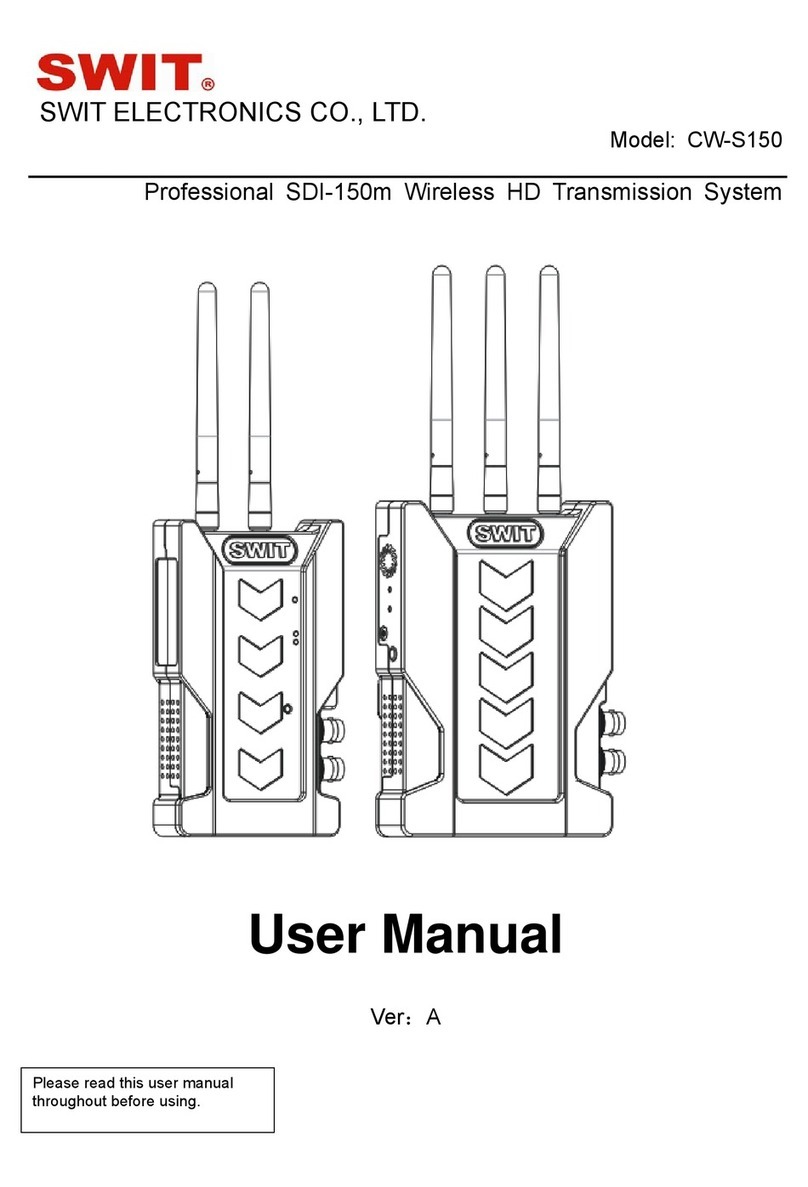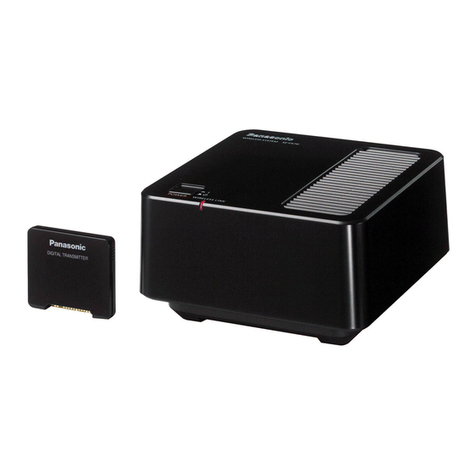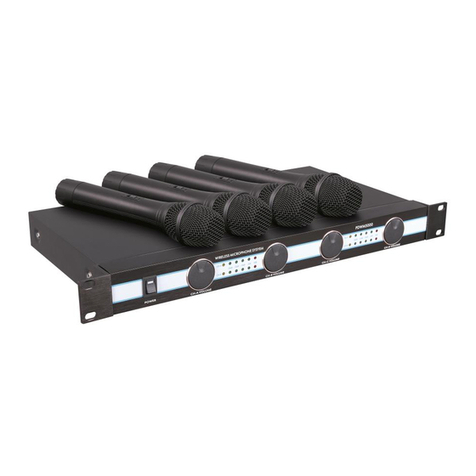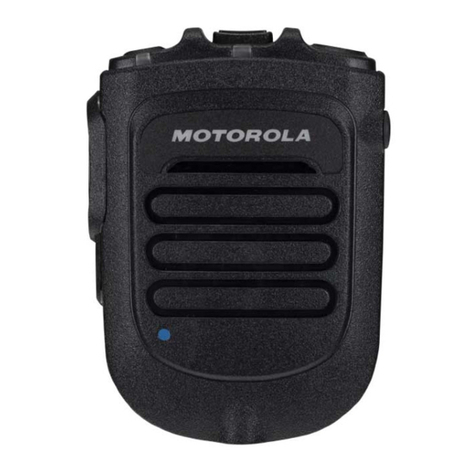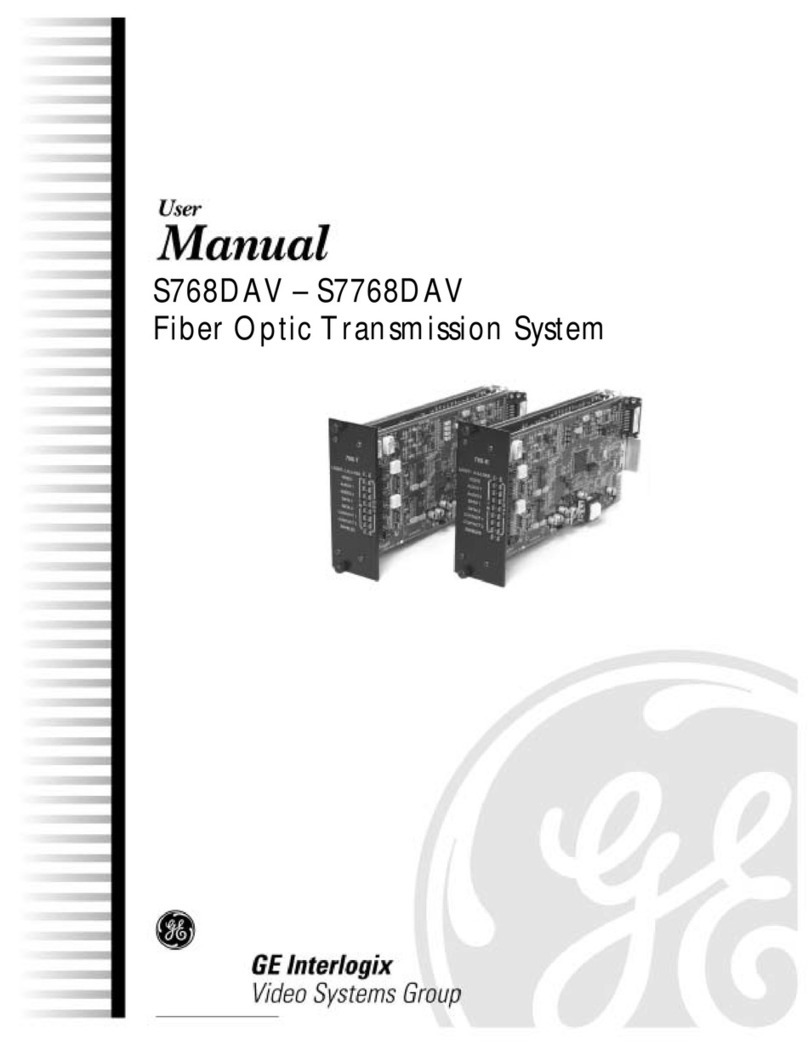
A Word to Vega Users
In selecting Vega wireless microphones, you are in the company of audio professionals
worldwide. Leadership for over 30 years has made “Vega” synonymous with wireless
microphones. Our equipment provides superb sound quality, outstanding performance, and
the durability needed for years of successful operation.
Caution!!!
Vega UHF wireless microphone systems must be licensed by the FCC before operation.
There are some restrictions on the issuance of such licenses; if you are not aware of the
rules for licensing, contact your Vega sales representative or the Vega factory.
This device complies with FCC Rule Part 15, and Industry Canada RSS-210 and
Operation is subject to the following two conditions: (1) this device may not cause
interference, and (2) this device must accept any interference, including interference that
may cause undesired operation of the device.
No adjustments should be made inside the transmitter or receiver for normal
operation or use. Due to the great possibility of causing improper operation, or even
damage to the transmitter, only qualified and experienced technicians should open the case.
Unauthorized adjustments or repairs inside the equipment case can void your warranty and
cause unnecessary repair costs. If you believe that internal adjustments or repairs are
needed, we recommend that you contact the factory or your nearest Vega authorized service
center.
Read This!
1.) Vega strongly recommends using Duracell batteries in the wireless mics. Other brands
yield as little as half the operating time. 2.) When setting the mic’s channel, ensure it is in
the proper orientation (see pages 6 and 7).
Unpacking
Verify the number of boxes shown as “shipped” has been received in good condition.
Unpack and save cartons for storage or reshipping. If, for any reason, you do not find the
equipment to be completely satisfactory, please immediately contact your Vega dealer or the
Vega factory.
Should service ever be required, remember your authorized Vega service dealer knows your
equipment best. They have the training and test equipment necessary to restore your
equipment to its peak performance.
2 Vega U2020 UHF
Contents
Quick Start ............................3
Receiver Front Panel Controls and Indicators ................4
Receiver Back Panel Controls and Indicators.................5
Handheld Mic Controls and Indicators ...................6
Bodypack Mic Controls and Indicators...................7
How to Set an Operating Channel ....................8
Setup and Operating Instructions ....................12
To Move Antennas to the Front of the Receiver ...............12
Receiver Antenna Selection and Placement .................13
Troubleshooting ..........................16
Warranty (Limited) .........................17
Service . . . . . .
........................19
Specifications ...........................20

